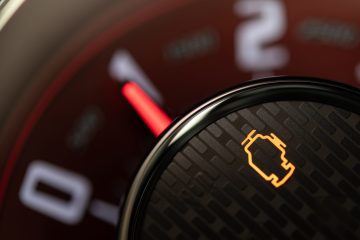The Motor Ombudsman has reported its highest-ever volume of service and repair cases brought by consumers to its dispute resolution service during the third quarter of the year.
Between 1 July and 30 September, the Ombudsman for the automotive sector received a total of 1,586 new submissions from motorists, up 18% from 1,348 in Q3 2023. This was slightly below the all-time high of 1,657 service and repair cases logged in the second quarter of 2024, however.
Overall this year, a total of 4,847 new service and repair cases were logged by individuals, a rise of 29% compared to the first three quarters of last year. This highlights an increasing awareness of the work The Motor Ombudsman does to help conclude any disputes in a fair and impartial setting, against a backdrop of growing awareness of the organisation.
What is driving service and repair complaints?
When looking at the principal drivers of service and repair complaints in the third quarter, the majority, nearly 40% (down from 51% in Q3 2023), originated from disputes logged within The Motor Ombudsman’s “drivetrain” category, which encompasses the engine and its individual components, transmission, fuel and exhaust systems.
Issues raised by consumers included, faulty timing chains snapping prematurely and causing shaking at higher speeds, turbo failures, and excessive oil consumption.
The standard of customer service experienced by consumers during a routine service or ad hoc remedial work, accounted for the second highest number of disputes, at just under a third (32%), higher than the figure of 17% reported at the same time last year.
There were instances of businesses damaging vehicles and individual components whilst on the ramp, causing an added element of frustration for consumers, whilst repairers carrying out work without the authorisation of customers, which contravenes the Service and Repair Code, also drove disputes. In addition, vehicle owners logged complaints about repairs not being undertaken following up-front payments, and multiple attempts not rectifying the reported faults.
The proportion of issues relating to the chassis area of the vehicle during the past quarter, which relates to the suspension, brakes, wheels, and steering, fell slightly compared to that seen during the July to September period last year (9% versus 11% respectively).
Parts problems
Problems raised by consumers took in the likes of cars being fitted with incorrect tyres, the wrong alloys being refurbished, premature brake pad wear and steering rack failures, and cracked subframes.
The fourth largest source of complaints (8%) reported in the third quarter of 2024 pertained to electrical systems. Some of the faults incurred by consumers, were namely, alarm wiring corroding, interior fans draining car batteries, erroneous stop/start systems, and flickering headlamps.
Charging and battery issues equally drove electric vehicle owners to log a complaint in the third quarter, although these were in a minority due to the comparatively lower car parc versus petrol and diesel models.
Also at 8%, but with a slightly lower volume of complaints than the former category, the exterior element of a vehicle witnessed consumers reporting sub-standard paintwork finishes, A-pillar trims detaching from bodywork, misaligned doors and incorrectly fitted door handles after repairs, and window panes sliding down door frames.
In contrast, the interior of vehicles drove the fewest number of disputes during Q3 at just 4%, mirroring the trend seen for the same quarter in 2023. Complaints encountered by consumers ranged from air conditioning systems blowing out warm air, to infotainment systems and DAB radios having intermittent functionality.
For the service and repair complaints received by The Motor Ombudsman during the past three months, the majority (48%) related to owners of diesel cars, followed by petrol models (43%), electric vehicles (5%), and hybrids (4%).
To a close
The three most preferred resolutions stated by the majority of consumers to help bring their dispute to a close, were a free of charge repair (31%), compensation (23%), and a full refund (19%).
Where a monetary value in relation to their preferred resolution was attributed by a consumer to their case submission, this stood at an average of £3,689, equating to a small drop of 13% versus the figure of £4,258 seen for the same Q3 period in 2023.
“The overall trend seen this year is that we have observed a significant increase in the number of contacts and cases across all of our Codes of Practice, not just in relation to service and repair disputes,” commented Bill Fennell, Chief Ombudsman and Managing Director of The Motor Ombudsman.
“With the rising costs of maintaining and operating a vehicle, coupled with the broader financial pressures on households, consumers are more likely to raise a complaint to help recoup any detriment that they may have considered to have suffered, and are submitting far more detailed and comprehensive evidence to bolster their case.
“With the car parc being predominantly petrol and diesel models, the drivetrain area of a vehicle continues to generate the highest volume of service and repair complaints, but this will no doubt see a shift once EV sales become more prominent in the run-up 2030.”



